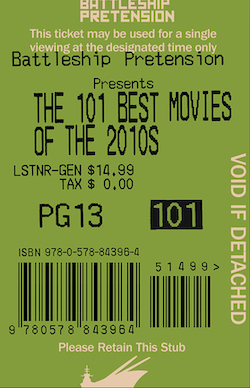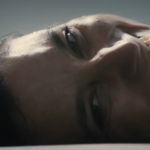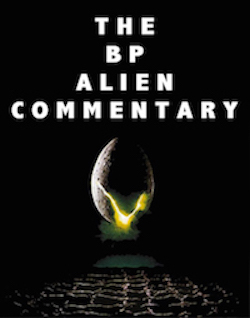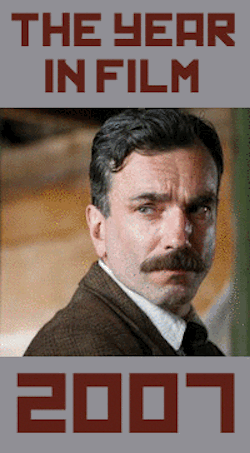David’s Movie Journal 5/9/11
I haven’t done one of these in a while but I swore I was gonna stick to it, unlike other New Year’s resolutions, so here we are. This time, we get a look at what happens when you never move things up in your Netflix queue and end up receiving in the mail some clues as to what was going on in your head a couple years ago. Apparently, at one point, I went on a mini Nicolas Cage kick and that’s why three of the below films involve him in some way.
Martin Scorsese is not exactly a minimalist filmmaker when it comes to style but I think you’d still be pretty safe in calling this his everything-but-the-kitchen-sink movie. The fact that he cast Nicolas Cage, a presence even more allergic to subtlety, actually seems to help the film. Cage’s performance as a burnt out and strung out paramedic is like the movie it’s in: Full of manic bluster and compellingly idiosyncratic but ultimately shallow. It’s not the least bit clear what Scorsese wanted to say with this episodic quasi-story. But it clearly gave him an excuse to utilize a whole bucketful of cinematic flourishes he couldn’t find a way to fit into his other films.
Another title from the files of My Girlfriend’s Nostalgia Picks, Overboard is a Garry Marshall film that I had never seen before. Given that I’ve hated every other Garry Marshall film I’ve seen, that shouldn’t be surprising. I was surprised, however, by the fact that I didn’t thoroughly hate this movie. Certainly the essential premise is infuriating in that Kurt Russell’s character should be looking at serious jail time by the story’s end and there are endless reinforcements of antiquated gender stereotypes throughout, all treated with an alarming nonchalance. But with the essential movie star qualities that Russell brings to the role along with hilarious and just plain goofy character turns from Edward Herrmann, Katherine Helmond, Roddy McDowell and Mike Hagerty, Overboard has a number of hearty laughs. That doesn’t mean I need to watch it again anytime soon, though.
Shooting a movie in New Orleans is a good way to get me to watch it. That city, the greatest I’ve ever visited and likely one of the greatest cities in the world, is enchanting in its concoction of influences, from European to American to Caribbean and beyond. Zandalee, an erotic thriller that’s neither very erotic nor thrilling, attempts to be a film version of that same mixture and succeeds in being little more than a pretentious, sometimes laughable, bore. Zandalee is the wife of Judge Reinhold, the successful telecommunications executive who reconnects with childhood friend Nicolas Cage at the ridiculous, bacchanalian bachelor party of an employee. Soon Cage, in full psychotic swing, is painting garish portraits of Reinhold and making upsettingly vigorous love to Zandalee. The film comes closest to being good when it’s about Reinhold’s struggles with his own masculinity but its insistence on turning the heat way up on every element overwhelms any insight.
When a Woman Ascends the Stairs
Mikio Naruse is a Japanese filmmaker with whom I was completely unfamiliar until a couple of weeks ago. I knew that this title was in the Criterion collection and when I saw that it would be screening at the Cinefamily here in Los Angeles, I looked it up. I gathered that Naruse’s reputation in the U.S. has grown over the past decade and that perhaps he will one day have the same level of respect as his contemporaries, Akira Kurosawa and Yasujiro Ozu. So far, When a Woman Ascends the Stairs is the only of his films that I’ve seen but I can report that it is indeed very good, if not quite as good as the best of the other two directors mentioned above. I suspect the reason Kurosawa is the most recognizable name of these three is that he is a populist and a crowd-pleaser. It’s no surprise that he worked with George Lucas and Martin Scorsese on Dreams. Like those two and the other American film school brat directors of the 1970’s, Kurosawa produced artfully constructed, large-scale films aimed at a mass audience. When a Woman Ascends the Stairs is far quieter, a more ground-level story filled with elements that are specifically Japanese. It has also guaranteed itself a minimized audience on American shores by being about women. The story concerns a bar hostess named Keiko in the city of Ginza who is approaching the age of 30. The film uses this seemingly arbitrary timetable to force her into making decisions about her life. Will she marry or open her own bar? These options are just about all she has but Naruse proceeds to reveal to us that neither the world nor our protagonist is as simple as that. Every assumption we make about Keiko, based on the time or her job or even the fact that she’s a woman, is in turn shown to be incorrect, in whole or in part. A heartbreakingly nuanced film is the result and, but for a merely perfunctory use of the camera and the frame, it would be as good as anything else I’ve seen from post-war Japan.
Back to Nicolas Cage and back to New Orleans. This time around, Cage is directing and, once I saw his cameo late in the film, I wished he had stayed behind the camera. Not that he’s doing a good job there, either, but at least then I would have been spared his gigantic prosthetic nose, banana yellow suit and hideous performance. The movie is about Sonny (James Franco) returning from the military to his NOLA life as a male prostitute, a life he had apparently been forced into by his mother at the age of twelve. Cage presents the facts of Sonny’s upbringing at face value and it’s hard to tell if that’s because he wants us to relate to the monsters that populate the story or because he simply doesn’t think there’s anything objectionable about them. Brenda Blethyn plays Sonny’s mother/pimp the way Cage would have played her were he a woman, as if she’s possessed by a psychotic demon she’s constantly trying to exorcise, even in the film’s more placid moments. Occasionally, the film settles into something that’s almost engaging, as the mind of a madman can’t help but be a little compelling. But then the characters start talking about the rest of the world’s inhabitants as “squares” again and we’re reminded just how uninteresting and underdeveloped Cage’s worldview really is.
Crossing the Sentimental Desert/Huan Dao/Once Upon a Time in Kinmen
This trio of narrative shorts from Taiwan, screened at the Director’s Guild as a part of the 27th Los Angeles Asian Pacific Film Festival, provides a vital and fascinating glimpse of past and present life in the island nation off the coast of China. “Crossing the Sentimental Desert” concerns a grown son coming home to help his father run the family’s bun shop in the wake of his mother’s death. “Huan Dao” also involves a prodigal son and deceased parents when a young man returns to his hometown on a business trip and spends a few days with his lazy, directionless younger brother, who is now living in the house they grew up in. “Once Upon a Time in Kinmen” is the odd man out here, given that it’s a period piece that takes place during the Chinese Civil War on Kinmen, a Taiwanese archipelago located less than 2 kilometers from mainland China. In addition to artillery, the two sides trade propaganda, sending each other leaflets and cigarettes in addition to using giant walls of speakers to blast messages across the water. The most interesting and telling thing about these three films is the fact that none of them has a satisfactory ending in the traditional sense. They all just stop, in one way or another. Perhaps this comes from being a nation whose identity is in constant dispute. There are vivid political, nationalist and economic issues at play in all of these films, even the two whose storylines are more personal and narrowly defined. “Huan Dao” is the best here. Funny, sad and well-acted, it suggests mountains of history between these two brothers and the section of Taiwan they grew up in. “Crossing the Sentimental Desert” overcomes a sappy score and an embarrassing overuse of slow-motion by having well-observed relationships at its center, anchored by a fantastic performance from Chen-nan Tsai as the grieving and stubborn father. “Once Upon a Time in Kinmen” should be better than it is, with the magical realism in the screenplay, but it’s translated by its director and actors with very little expenditure of imagination.
Werner Herzog’s much-ballyhooed excursion into 3D filmmaking has turned out to be less of a revelation than that description would suggest. The experience is, for most of the documentary’s duration, that of watching a slightly better than average Herzog doc, but with eye strain and motion sickness. Large portions of the movie are shot with non-3D cameras and with no regard for how things will look after converted. Handheld tracking shots of people walking on uneven, rocky, muddy paths are not what this technology was developed for. But on those occasions when the film’s actual subject matter – cave paintings dating back more than 30,000 years in a location open to only a select few – is given the chance to exist in front of the audience in all their depth, the effect is breathtaking. On their own, these paintings would inspire awe but when we’re allowed to see how they jut and curve with the contours of the cave walls, they take on life, seeming almost to move. Leaving the 3D behind, the film’s other problem is Herzog himself and the people he interviews, who spend most of the middle third of the movie telling us how we should feel about these ancient works of art. It’s only in the latter section, when we get minutes on end of lingering shots of the paintings accompanied by nothing but music, that Cave of Forgotten Dreams realizes its potential. Follow that up with an epilogue made of the best kind of Werner Herzog weirdness, concerning albino crocodiles, and you’ve got a film that is, if only in its denouement, something worth watching. Just bring some aspirin.





































